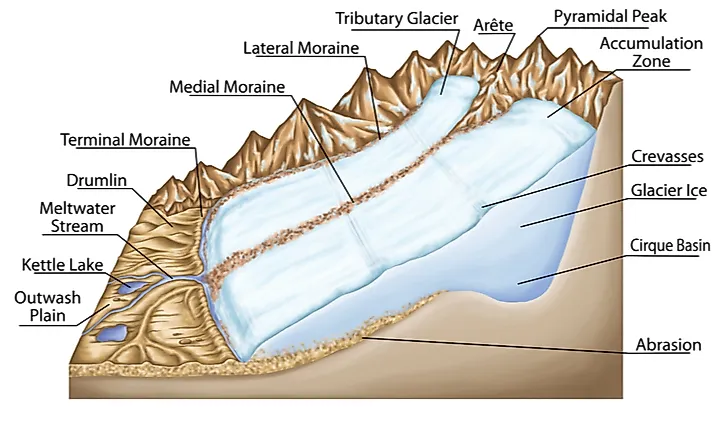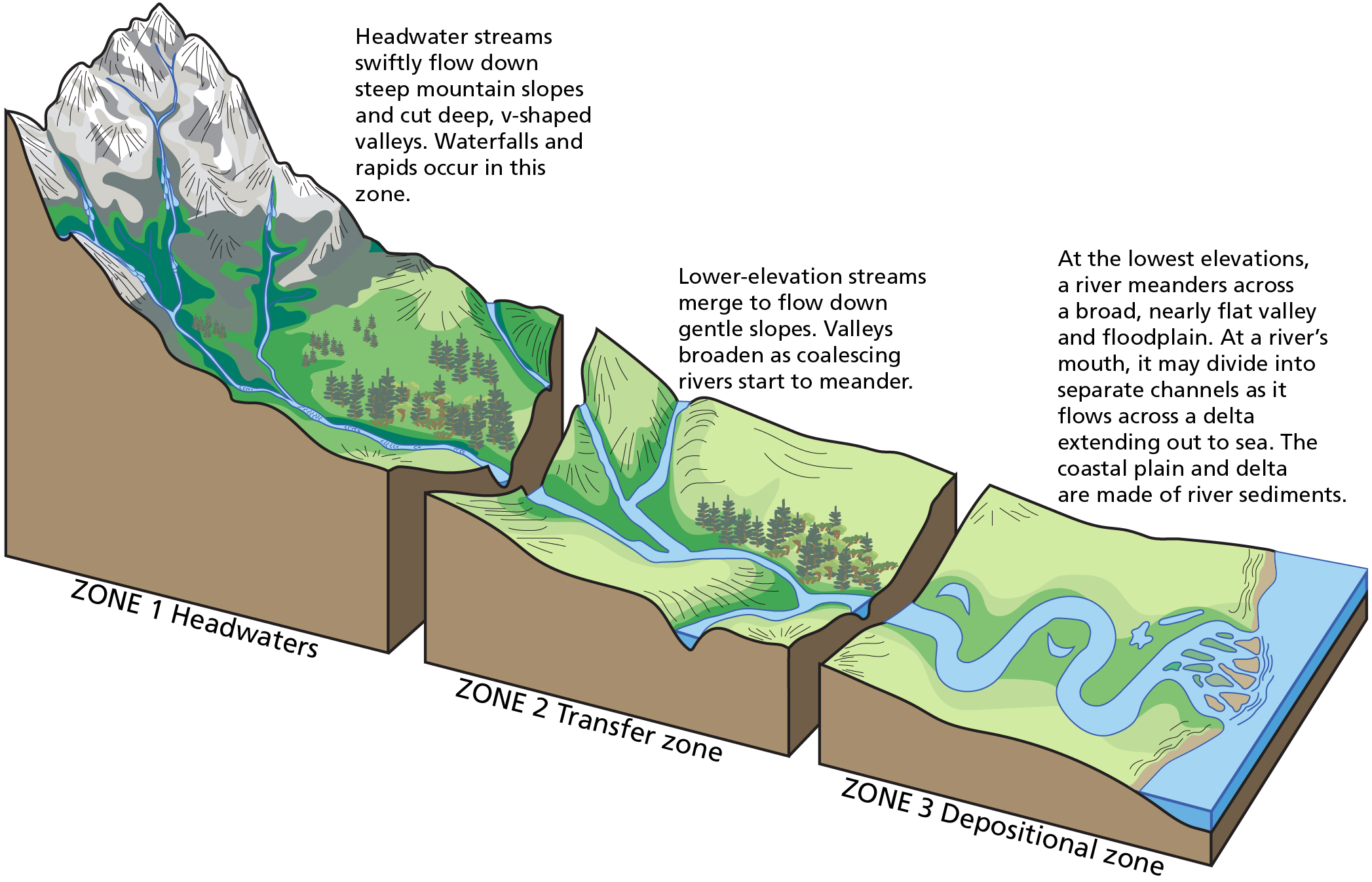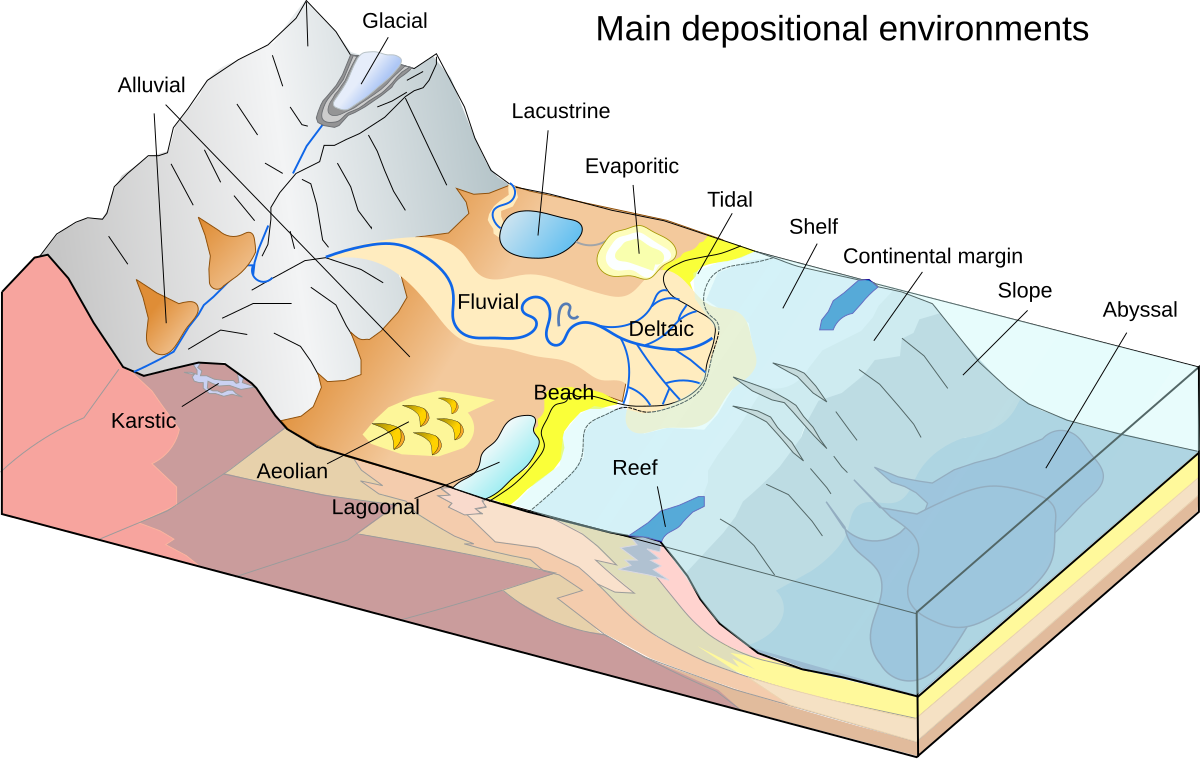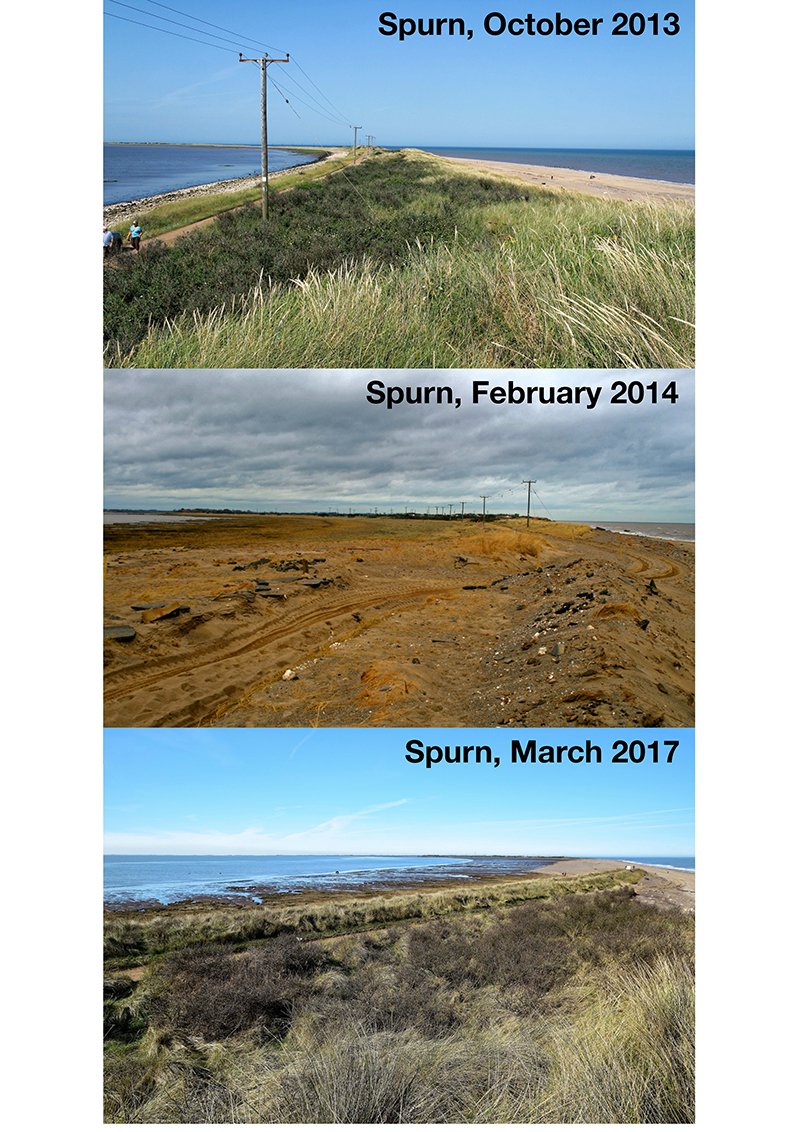The outcome is a unique series of layers called topsets foresets and bottomsets. Types of glacier.

Erosion And Deposition By Glaciers Ck 12 Foundation
Glacial till Outwash deposits and plains Moraines Terminal lateral and ground moraineseskerdrumlins Nunatak roche moutonne.

. Examples of landforms include hills mountains and shoreline features. Sedimentation is the combined name for all the processes that cause organic and mineral particles to get settle. Berms runnels and cusps.
Evaporation - occurs when warmer body of water than cool air above it. Inverted boat-shaped deposition in a till plain caused by deposition. These plains are formed by the deposition of sediments brought down by rivers.
The plains formed by the filling up of sediments carried by agents of Erosion like wind rivers glaciers and underground water into depressions are called Depositional plains. Are formed by a combination of erosion transportation. Deposition of weathered remains of other rocks.
The glacial landscapes are formed by the action of glaciers. Deposition of the results of biogenic activity. Arcuate delta Arcuate delta is triangular in shape.
All three depend on the amount of energy there is in a river. Upslope orographic - occurs when air mass forced upward. Identify and name the types of sand dunes created by aeolian deposition.
1 Meanders developed through lateral erosion normal meanders 2 Meanders developed by vertical erosion or valley deepening incised meanders and 3 Misfit or unfit meander is also identified as the third type of meanders. Explain how sand dunes are formed Identify name and describe the landforms associated with basin-and-range regions ranges alluvial fans bajadas and. The main depositional features of the glacial landscapes are.
Cirque and cirque lake Horns and Serrated ridges Arêtes Glacial valleys troughs Hanging valley. The beach is the area between the lowest spring tide level and the point reached by the storm waves in the highest tides. The significant landforms resulting from fluvial erosion by streams include river valleys waterfalls pot holes structural benches river terraces river meanders ox-bow lakes and peneplians etc.
Coastal landforms of deposition occur where the accumulation of sand and shingle is greater than it is removed. This can include sand sediment and shingle resulting in landforms of coastal deposition. Truncated delta On the basis of growth.
These are erosion transportation and deposition. Since sand is the coarsest its deposited close to the mouth of the river. Name and explain three types depositional landscapes.
Glaciers are formed by the accumulation and compaction of snow on mountains. The first to be deposited is sand which is the coarsest sediment. Written by vukelj wednesday march 9 2022 add comment edit.
There are three main types of processes that occur in a river. Coastal deposition is when the sea drops or deposits material. They may increase in size if sediments soil and rocks are added to them.
A depositional landform is a landform that was created due to glacial deposition. Is the material that has fallen onto the side of a glacier and carried along by it. On the basis of shape.
Advection - occurs when warmer air moved across cooler water. Depending on its position the moraine can be ground moraine and end moraine. The river mouths are often deposited with an excess supply of sediments and form a triangular.
General term applied to rock fragments gravel sand etc. These are the glacially formed accumulation of unconsolidated glacial debris. Erosion transportation and deposition the Hjulström Curve.
Outer edges are like an arc of a circle or a bow. Mar 09 2022 name three types. Look at the location map of coastal landscapes in.
Beaches and associated features. Deposits of sediment are the leading cause behind the formation of beaches. Terminal Moraine is deposited by the glacier at the snout as it retreats.
Mar 13 2022 types of depositional landforms the main depositional features of the glacial landscapes are. The landform of deposition occurs when an accumulation of sediments and sand is greater than its removal. The energy in a river causes erosion.
Different scales yield different information. Deposition leads to the formation of a salt marsh. Evaporation - occurs when warmer body of water than cool air above it.
Accumulation and the consolidation of sediments. Given elevation starting temperature and LCL calculate the changing temperature of air as it moves over a mountain. Meanders are divided into two major types on the basis of the nature of fluvial erosion eg.
Types Of Depositional Landforms The main depositional features of the glacial landscapes are. The finer sediment silt fine sand and clay is deposited next. Landforms of Coastal Deposition.
A geological process in which sand and pebbles are added to landforms is known as deposition. Carried by a glacier. Formed when the deposited material in a till plain gets depressed locally and forms a basin.
The dominant geomorphic processes are hillslope erosion and deposition slope wash processes and fluvial modification alluvial deposition processes and are very localized in scope. This is particularly the case where constructive waves are prevalent or where there is an abundant amount of beach material supplied. Is material carried in the middle of the glacier.
On the basis of shape.

Ssm Ch 2 Landscapes Geomorphology And Site Description

A List Of Glacial Depositional Features Or Landforms Worldatlas

River Systems And Fluvial Landforms Geology U S National Park Service

Depositional Environment Wikipedia

Geography Extreme Landscapes Desert Depositional Features

Types Of Depositional Landforms


0 comments
Post a Comment